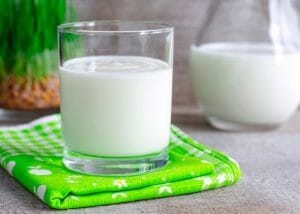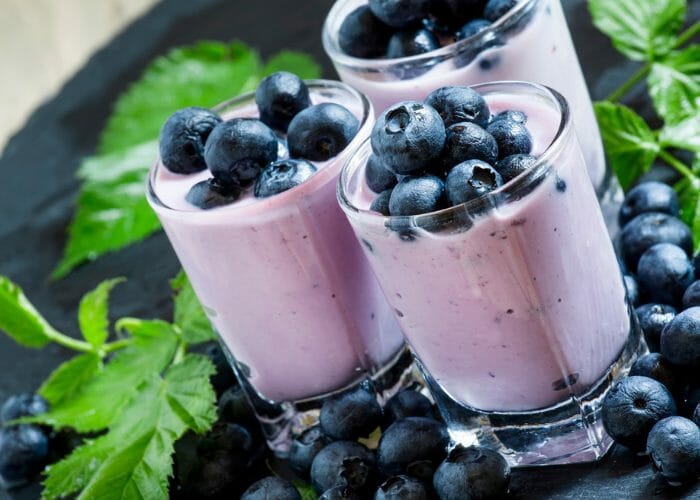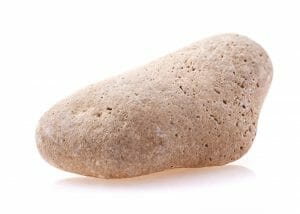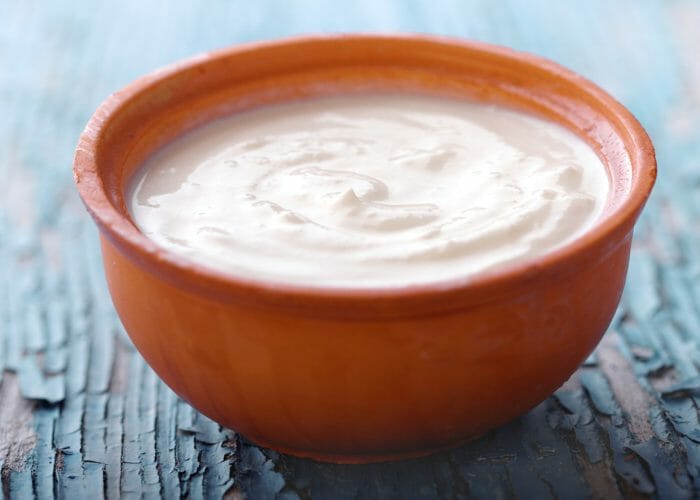Our 3 Easy Recipes of Homemade Yogurt!
Do you want to try something completely new in the kitchen? If the answer is yes, it’s a wonderfully exciting idea to make some homemade yogurt. While most people assume that this process is a difficult one, it’s pretty straightforward once you get the hang of it. Before you know it, it’ll be as easy to whip up a lot of probiotic-rich yogurt as pie. So, without any further action, let ‘s dive right in and find out how you can do it yourself.
Homemade Yogurt vs Store-Bought: Which is Better?
First of all, let ‘s talk about why you might want to make homemade yogurt. After all, buying it from the store is certainly the quickest and easiest option. While that may be the case, you still need to consider some other facts. You get total control of the product when you make yogurt for yourself. It could also save you money, and it means you can make the most healthy snack for you. Let’s take a look at some of the benefits of homemade yogurt and why you should give it a whirl.
The cost factor

When you’re on a budget, every bit of money you can save really helps. The smartest way you can save money is to reduce your spending in a small, sustainable way. For example, you should try to spend less on your weekly grocery bill or wherever possible.
National statistics show that the average cost of yogurt has risen consistently in recent years. It is quite literally getting more and more costly to be a lover of this healthy treat. With that in mind, you should find that buying fewer yogurt-based products in the store and making your own instead saves you a substantial amount of money.
When you first start looking at homemade yogurt recipes, you will see that you need a few ingredients to get started. However, in the long-run, you could save money on this product. The truth of the matter is that homemade yogurt recipe ingredients don’t cost a great deal of money. That means that you don’t need to spend over the odds to get started.
Quality of the yogurt

One of the biggest benefits you get when you make homemade yogurts is that you can control what is in it. The same can’t be said for store-bought options. The fact of the matter is that the so-called healthy yogurts we buy at the grocery store could be full of harmful things like additives and an excessive amounts of sugar. In fact, one report from the British Medical Journal found that the average sugar content of yogurts was more than the “low-sugar” threshold set by the European Union regulations.[2]
Of course, being vigilant when it comes to reading labels is one way to ensure that you know what you’re eating. However, whipping up a batch of homemade yogurt yourself means that you have complete control over the quality of your batch. You will know everything that is inside the yogurt, which means that you can be certain of what you’re putting in your body. Should there be any sweetener, it’s at your own discretion.
Customization and taste

Do you have a penchant for berries? Maybe you’re a huge fan of Greek yogurt and honey? Whatever your taste, learning how to make your own could be a wise decision. One of the greatest advantages of homemade yogurt is the fact that you get to customize it to your own personal taste. When you have learned a basic homemade yogurt recipe, the sky’s the limit with what you can do.
Experimenting with different flavors, ingredients, and tastes will mean that you can try a whole range of exciting new snacks. When you buy it from the store, you have no choice when it comes to what’s in it. Perhaps the most striking difference with homemade yogurt is the fact that you can do whatever you please with it. Why not come up with some unique and interesting homemade yogurt recipes for yourself?
Ethical issues

Let’s face it, when you buy yogurts from the store, you have little control over the major company that gets your money. If you’ve taken the time to look into any of the ethical issues surrounding some of the world’s biggest manufacturers, you may already want to avoid certain brands. One option is to go for fairtrade and ethical companies. Supporting them helps you to give a little something back and ensures your products are ethical.
There’s just one major drawback – many of these planet-friendly and ethical brands come with a high price tag. Learning how to make yogurt means that you can avoid this issue entirely. You can begin to create your own homemade products that you can enjoy whenever you please. Taking the ethical point out of the equation should be a real relief too.
Is Yogurt Good for You? Check Out These 5 Surprising Benefits
Eating a deliciously rich and creamy yogurt in the morning feels so right that it must be wrong. Right? Actually, there are a lot of health benefits that are associated with consuming it on a regular basis. Adding these probiotic-rich foods to your daily diet could yield some rather remarkable results. Let’s take a look at the major benefits of yogurt.
1. It’s packed with probiotics

Probiotic-rich food is a hot topic right now, not least thanks to the new awareness surrounding gut health. These live bacteria and yeasts are often present in mainstream and homemade yogurt options.[3] The reason for that is that the “starter bacteria” allows these things to breed within the snack itself. Whether you make some yourself or buy probiotic yogurt in store, this is something of which you should be aware.
But wait, what do probiotics do for your body and why does it matter? Well, one of the main advantages of eating foods rich in probiotics is that it could support your gut health. The main theory here is that consuming external bacteria, such as the ones found in probiotic yogurt, can help to restore your natural level of gut bacteria.[4] What’s more, some forms of probiotics is linked to a decrease in symptoms of irritable bowel syndrome.[5]
Do you suffer from a leaky gut? Probiotics are one of the best ways to tame the symptoms of this uncofortable condition.
2. It’s protein-rich

Packing six grams of protein per 100g, yogurt is one of the best ways you can get the protein you need in your diet.[6] There are, of course, a great many reasons that you need to ensure that you boost your protein intake. For one thing, research shows that eating foods that are rich in the stuff means that you will stay fuller for longer.[7] That, in turn, could help you to curb excessive eating and means that you can maintain a healthy weight.
Aside from that, protein-rich food (such as certain types of yogurt) can help you to control your appetite overall. Research conducted with healthy women found that eating Greek yogurt as opposed to less protein dense varieties helped maintain a healthy appetite.[8] If you’re hoping to cut down your portion sizes, choosing a protein-rich snack like this one is one of the best tips you can learn.
3. It could improve your cholesterol

Sometimes, yogurt gets a bad rap. The reason is that it is quite high in saturated fat, which could be one of the contributors to unhealthy cholesterol levels.[9] Harmful cholesterol has been linked to higher incidences of heart attacks and strokes, in the long term. For that reason, many people are under the impression that eating yogurt can be quite bad for you. However, research into the area suggests that quite the opposite is true.
Research suggests that consuming dairy and whole milk products, such as homemade yogurt, could mean that you have a lower overall risk of heart disease.[10] The reason is that these products could actually increase your healthy HDL cholesterol, rather than make it worse over time. While the evidence is still relatively new, it does suggest that including these types of products in your diet is the way to lead a balanced lifestyle.
4. It could boost your immune system

Your immune system is the term given to the network of cells, tissues, organs, and the substances that support your body’s defenses against infections.[11] The better this network is, the less likely you are to get sick on a regular basis. For that reason, doing everything you can to boost your immune system is a highly positive move for your health. It could be worth considering the food that you eat and the impact it has on your wellness.
Experts believe that, thanks to its high probiotic nature, yogurt could help you to strengthen your immune system. Studies have found that consuming yogurt regularly helps to prevent colds and infections.[12] The reason could be that, when these adults eat yogurt, it has a direct impact on their body functions. Should you wish to get stronger and improve your immune system, including homemade yogurt in your diet is one way to go.
5. It is super nutrient-rich too!

Boasting a whole load of calcium, vitamin B12, magnesium, and potassium, one of the biggest benefits of yogurt is that it’s a fully-fledged superfood.[13] Think of your body as though it were a machine. It needs the right power and fuel to keep working all day long. Adding homemade yogurt to your current eating plan could mean that you get more of the healthy vitamins and nutrients that your body needs. It’s a simple step toward living well.
What’s more, it could lead to a whole range of health benefits. For example, boosting your vitamin B12 intake could protect your body against the threat of heart disease.[14] Since this health condition is responsible for one in four deaths in America every year, doing what you can to avoid it is the smartest thing you can do in terms of wellness.[15] It doesn’t take much to make changes to your diet and you could find that it’s a huge help.
Common Myths About Making Your Own

Ready to learn how to make yogurt? You might still be a little unsure about this type of recipe. Sadly, there are loads of myths surrounding homemade yogurt and the effort that it takes. Before we go any further, there are some major fallacies that we should dispel. Here are just a few things that you might have heard about this DIY recipe.
Myth #1: It’s expensive
One of the major myths when it comes to how to make yogurt is that it’s expensive. That is simply not the case. When we look at the ingredients for homemade yogurt shortly, you will see that you don’t have to spend a great deal to make a high-quality snack for yourself.

Myth #2: It’s time-consuming
If you’re wondering how to make yogurt, there could be one issue on your mind. People tend to think that this process highly time-consuming and laborious. While the fermentation process will take a matter of hours, the work that you actually put into making the yogurt itself will only take around an hour or two. After that, you simply have to put it aside and let the live bacteria do its magic. Simple.
Myth #3: It’s difficult
Don’t panic if you’re not a pro in the kitchen. You don’t have to be a trained dessert chef to make your own yogurt. One of the most harmful myths about this particular type of recipe is that it’s challenging. When you try it for yourself, though, you will see that it’s anything but. Although making a DIY version is a skill, it’s one that you can learn in no time at all.
How to Make Homemade Yogurt
For a super simple homemade yogurt recipe, you only need two ingredients – milk and a small amount of yogurt. Yes, it really is that simple! Here’s what you need to know about how to choose the right homemade yogurt recipe ingredients and the process too.
Choosing the right “starter yogurt”

You might be wondering why you need yogurt to make yogurt, but using a premade batch means that you can work the healthy bacteria you need into your recipe easily. To make sure that the yogurt you buy has the right stuff in it, look for the “Live Active Yogurt Cultures” description on the label. When you see that, you can be sure that the yogurt has what it takes to create the right environment for your recipe.
Of course, when it comes to choosing the yogurt you use, you need to avoid flavored brands or ones that are high in sugar. You should also opt for a plain or Greek yogurt. The better the quality of the product you choose, the more likely you are to create a temptingly rich snack. Don’t scrimp when choosing your yogurt – it could make all the difference in both taste and nutritional value.
Choosing the right milk

While it’s true that you can use reduced-fat milk to make yogurt, you might want to avoid doing so. The main problem with this product is that you can never be 100% sure what’s in it. Research from Florida Health suggests that low-fat or reduced fat milk is still a large contributor of saturated fat in the average diet.[16] Since using whole milk gives you a creamier and better consistency, it’s worth choosing it over alternatives.
The yogurt making process

In a moment, we will look at some specific homemade yogurt recipes, which you can follow for yourself. However, let’s go over the basics so that you understand the process. You start by heating and cooling the milk. You then need to add the yogurt to the milk and combine the two by whisking.
Next, you put the mixture into a sealed container and then put it in a warm (around 110°F), dry place for some hours. When it’s set, you simply need to move the yogurt to the fridge to cool. Most batches will keep for around two weeks.
What Equipment Will You Need?
Now that you’ve got the basics down, you might be wondering what items you need to help you make your homemade yogurt. Don’t panic – you don’t need to go out and buy a whole range of expensive kitchen gadgets. You can easily make it at home using things that you already have in your kitchen. Here’s what you need to know and how you can get started right away.
Yogurt Maker

When learning how to make yogurt, this first item might seem like a logical place to start. Sure, you can buy a whole range of yogurt makers online. The advantage of getting a specific machine to do the job for you is that you don’t have to worry about keeping the temperature or pressure stable – it does the job for you.
However, these gadgets are often costly and something of an investment. Unless you’re going to make homemade yogurt on a regular basis, there’s no need to spend your cash on them. You can make yogurt without one of these makers quite easily too.
Pressure Cooker

Pressure cookers are super handy gadgets and, if you happen to already have one, you can actually use it to make some homemade yogurt. Most of the time, people tend to use this type of cooker to make rice, stews, and curries. However, it can provide just the right environment to make some healthy yogurt as well. In fact, many of these gadgets actually have a specific ‘yogurt’ feature or function. Read the instruction manual to find it.
Important!
If you do decide to use a pressure cooker, you should be certain to clean it well first. While that may seem like an obvious tip, it is vital to the production process. You don’t want anything interfering with the bacteria. You should use some boiling hot water to clean the pressure cooker before using it.
Pot with a Lid

If you don’t want to use a maker, there is another option that you can try. Using a heavy pot, such as a Dutch oven, works just as well. You can make homemade yogurt in this type of container so long as you do a large batch. When it comes to keeping the temperature and conditions at the right level, you can use a switched off oven. These spaces tend to be warm and dry, which is the ideal environment for making yogurt.
Weight (or Rock)

Should you decide to use a pot with a lid rather than a yogurt maker, it’s wise to get a weight to hold the lid down. Ideally, you want the container to be as air-tight as possible. That’s why using something heavy is advisable. You can buy a specific weight and use it on top of the lid. Failing that, you could always use a large rock instead. You’ll save money incorporating cost-effective switches like these.
3 Easy-Peasy Homemade Yogurt Recipes
Got some time to spare? Making some homemade yogurt is a neat task that you can try at any time. Making a large batch of the stuff for your family is a genius way to show that you care (while sneakily looking after their health too!).
For now, let’s go over three of the most basic recipes you can use. It goes without saying that you can customize these to suit your tastes and the ingredients you prefer. However, for now, just focus on getting the main steps right. Let’s take a look at three easy-peasy homemade yogurt recipes.
1. Instant Pot Yogurt

Do you have a pressure cooker at home? If so, making some instant pot yogurt is a straightforward enough process. You don’t need to have any special skills to get this right. You can make massive batches using this recipe, which means that you’ll have more than enough to go around. Here’s what you need to know to make a super simple instant pot yogurt in no time at all.
Prep Time: 2 hours | Set Time: 8 hours | Serves: 6 | Calories per serving: 295 kcal
Tools/Equipment: Pressure cooker with a ‘yogurt’ feature and whisk
Ingredients
- 8 cups whole milk
- 1 tbsp yogurt (with live cultures)
Directions
- Pour all of the milk into the pressure cooker. Put the lid on top and then press the ‘yogurt’ feature or function. Leave the milk to boil for around an hour.
- When the first part of this cycle is complete, you should hear a beep. Of course, the system will vary depending on the brand. Take the inner pot out of the pressure cooker and set it on the side. Leave to cool for around an hour again.
- If there is a skin on top of the milk when it cools, you should take the chance to remove it now. Then, you should whisk the live culture yogurt into the milk itself.
- Next, you should put the pot back in the pressure cooker and press the ‘yogurt’ feature or function once again. Leave for eight hours.
- Take the yogurt out of the slow cooker and put it into containers. You should store it in the fridge for no longer than two weeks.
Double-up your batch!
One of the best things about learning how to make yogurt in a pressure cooker is that there’s a load of space. If you have a big family (and a big need for yogurt), you might want to double-up the batch here. Simply double your ingredients so long as there is enough room in your cooker.
2. Coconut Yogurt
If you’ve got a sweet tooth, you are certain to fall head over heels in love with this next homemade yogurt recipe.
Believe it or not, making a coconut yogurt at home is one of the easiest things you can do. The main change here is that you have to swap the regular whole milk for a coconut milk substitute. That means that the overall flavor will be a little sweeter and lighter. Here’s how you can get started.
Prep Time: 30 mins | Set Time: 8 hours | Cool Time: 4 hours
Serves: 4 | Calories per serving: 92 kcal
Equipment: Large pot, large spoon, dutch oven, weight, thermometer, whisk, and four sealable containers
Ingredients
- 2 cups coconut milk
- 1 tbsp yogurt (with live cultures)
- 1 tbsp honey
Directions
- Put the coconut milk in the large pot and put it on medium heat. Bring the liquid to 180°F (you can check it with the thermometer!). Leave for 10 minutes and then turn off the heat.
- Add the honey to the milk and then mix well. Not only will this step add a richness to the flavor of the yogurt, but it also gives the bacteria something to feed on.
- Pour the milk and honey mixture into the Dutch oven and put it in a switched off oven. If the lid looks at all loose, use the weight to keep it down.
- Leave for around an hour then check the temperature of the liquid. When it is at around 100°F, take the Dutch oven out of the oven.
- Add the yogurt to the milk and whisk. You need to ensure that the two elements combine well enough before moving onto the next step.
- Cover the Dutch oven once again and put it back in the oven for around seven hours or until it sets.
- Take the set homemade yogurt out of the Dutch oven and divide it into the four containers. Put them in the fridge to cool for four hours or more, if possible.
- When serving, drizzle the honey on top.
Make it extra special!
This homemade coconut yogurt is a real treat! However, there’s an easy way to make it extra special. Why not add some desiccated coconut to the top of the dish? Or perhaps some pomegranate?
3. Greek Yogurt

As irresistible as it is creamy, there’s nothing quite like digging into a delicious homemade Greek yogurt. One of the defining features of this particular dessert is the fact that it is so thick and rich. A quick trick to get that result is to use some gelatin in the yogurt making process. Doing so will mean that, when the yogurt sets, it has the desired texture. If you’re reading to learn how to make yogurt like a pro, here’s a quick recipe for you.
Prep Time: 30 mins | Set Time: 8 hours | Cool Time: 4 hours
Serves: 4 | Calories per serving: 111 kcal
Tools/Equipment: Large pot, large spoon, dutch oven, weight, thermometer, whisk, and four sealable containers
Ingredients
- 2 cups whole pasteurized milk
- 1/2 tbsp Greek yogurt
- 1 small gelatin sheet
Directions
- Put the milk in a large pot and heat to 180°F. Keep the milk warm for around 5-10 minutes and then take it off the heat. Leave it on the side to cool for around 20 minutes or until it hits the 110°F mark. You can check it with the thermometer.
- While the milk is cooling down, take the gelatin sheet and soak it in cold water for around 5-10 minutes (or until soft!). Remove it from the water.
- Add the Greek yogurt to the milk and whisk until it combines. Next, break up the gelatin strip and add it to the mixture. Stir well until the gelatin is completely dissolved.
- Put the entire mixture into a Dutch oven and then place it in a switched off oven for around seven hours or until it sets.
- Remove the Dutch oven. Divide the mixture into the four sealable containers and put them in the fridge. Leave for around four hours before serving.
Add some extra flavor
When you’ve mastered the basic homemade Greek yogurt recipe, you might want to take things to a brand-new level. Why not mix things up and add some flavor? When you mix the yogurt and the gelatin into the milk, it’s the prime time to also add whatever extra you please. For instance, you could use some pureed berries to give the pudding an extra kick of taste. Alternately, you might want to add some cinnamon powder or agave syrup.
Expert Serving Tips

When you learn how to make yogurt, that’s only half the job. The beauty of these desserts (or breakfast snacks) is in how you serve them. You can be as experimental as you want when it comes to toppings. Have a little fun along the way! If you need a bit of inspiration, here are a few ideas to try when you first start out.
- Add some granola. If you’re eating your own batch for breakfast, you might want to add something to give it a little crunch. Some tasty granola is the answer. Not only will this add a new texture to the dish, but it also means that you get some added nutrients in there too.
- Top with fresh fruit. Vitamins are a massively important part of a balanced diet. Why not add some fresh fruit to make it healthier than ever? Blueberries are an ideal superfood, for example, as they boast both antioxidants and vitamins.[17] Consider what flavors you love the most and tailor your homemade yogurt to suit you. You could also add some homemade jam, like this DIY black currant jam.
- Mix in some nuts. Nuts are an excellent source of protein, which is one of the many essential nutrients your body needs. They are also rich in healthy fats and can help you to feel fuller for longer.[18] With that in mind, adding them to your homemade yogurt could be something of a genius idea. You can experiment with different types of nuts. From walnuts to toasted almonds, there’s a broad variety of healthful treats you can try out there.

Conclusion
What are you waiting for? Now that you’ve read all about making homemade yogurt, one thing should be strikingly clear –it’s way easier than most people expect. This two or three ingredient treat is one of the best you can make for your health. Plus, when you add that to the fact that it’s a highly versatile snack, you really do have a recipe for success.
Start by mastering the three recipes here and then have a little fun customizing your dishes. As soon as you’ve learned the basics, you will have the chance to put your chef’s hat on and make your own recipes from scratch. Before you know it, you will be an absolute pro at making yummy homemade yogurt.




















